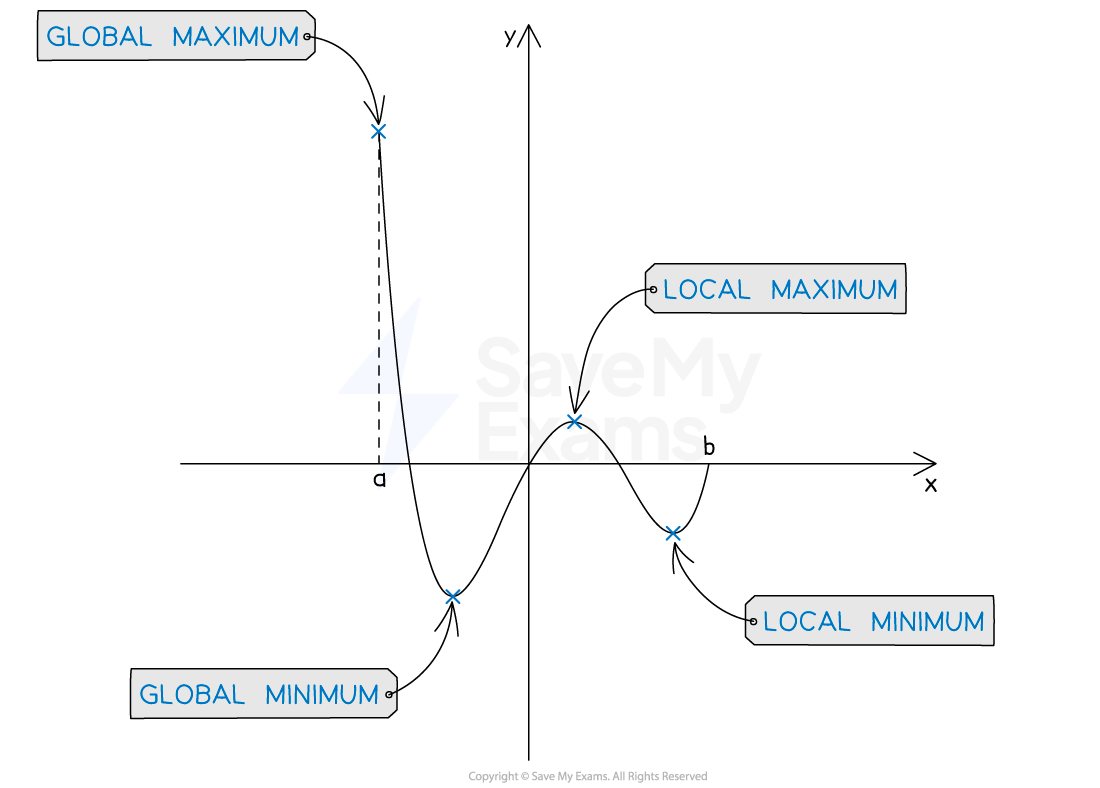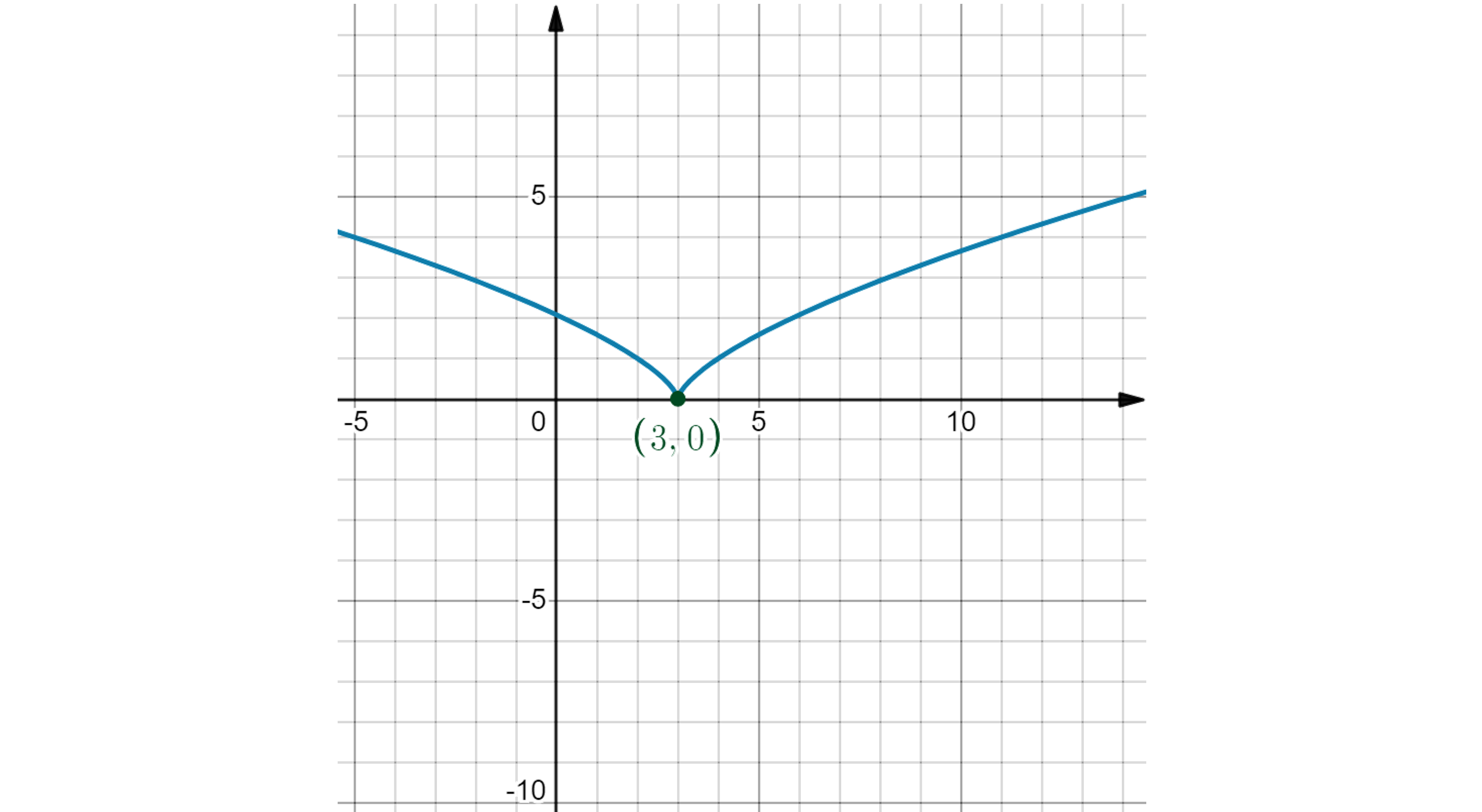Critical Points (College Board AP® Calculus AB): Study Guide
Local extrema versus global extrema
What is the difference between local and global extrema?
The term extremum (plural extrema) refers to maximum and minimum points on the graph of a function
An extremum can be either local (relative) or global
A global extremum is the maximum or minimum for the whole of a function's domain
A local or relative extremum is the maximum or minimum within a specific part of a function's domain
We can say that
has a
global maximum at
if
for every
in the domain
local maximum at
if
for every
in some open interval around
global minimum at
if
for every
in the domain
local minimum at
if
for every
in some open interval around
Every global extremum will also be a local extremum
However not all local extrema are global extrema

Critical points
What is a critical point?
A critical point is a point where the first derivative of a function is
equal to zero,
or does not exist
In the case where
does not exist, the function itself must still be defined at
(i.e.
must exist) in order for
to be a critical point
E.g.
does not have a critical point at
, but
does
All local extrema occur at critical points
However not all critical points are local extrema
What different types of critical points are there?
Local minimums and maximums
At local minimums and maximums, the derivative is most often equal to zero
I.e. for a function
,
at a local minimum or maximum
The tangent at these points is horizontal
There are some exceptions to this, for example where the function 'jumps' to a higher or lower value

Depending on the function, these can also be global extrema
E.g. The graph of
has a local minimum at (2,0), which is also a global minimum
Points of inflection
A point of inflection is a point where a graph changes concavity
You can read more about concavity in the 'Concavity of Functions' study guide
Points of inflection are not local extrema
Only points of inflection where the first derivative is zero are critical points
It is possible for points of inflection to exist where the first derivative is not zero
A point of inflection with first derivative zero is sometimes referred to as a saddle point
E.g.
has a saddle point at

Points where the derivative does not exist
As well as where the derivative is zero, a critical point occurs at points where the derivative does not exist
If the derivative does not exist at a point, the function itself must still be defined at that point to be a critical point
Consider the function
defined by
,
The function is undefined at
, so will not have a critical point at
Consider the function
defined by
The function is defined at
(it has a value of
)
It has a first derivative of
The first derivative does not exist at
So
has a critical point at
The image below shows a similar example

Worked Example
Find the coordinates of the critical point(s) on the graph of the function defined by
.
Answer:
Find the points where the derivative is equal to zero
or
exists for all
, so there are no other critical points (i.e. where the derivative does not exist)
Find the corresponding values for these two critical points
A graph of the function is shown below

Critical points at (1, 25) and (4, -29)
Worked Example
Find the coordinates of the critical point(s) on the graph of the function defined by
.
Answer:
Differentiate the function using the chain rule
There are no points where the derivative is equal to zero
However the derivative will be undefined when , as the denominator will be zero
The function is defined when , as
However is undefined, so there is a critical point at
A graph of the function is shown below

Critical point at (3, 0)

Unlock more, it's free!
Did this page help you?